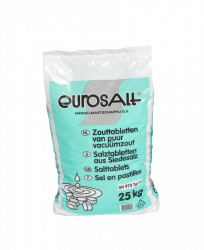Sodium Chloride
Sodium chloride (NaCl) is a salt popularly called cooking salt and it occurs naturally in seawater. The crystals of this salt are cubic-flat centered in shape, i.e. the ions are stacked like dice.
Sodium chloride is extracted in the following ways:
by evaporating brine
by evaporation of seawater
by mining in salt mines
In the Netherlands salt is extracted by evaporating brine. This is done by pumping water into the ground in places where there is a lot of salt in the ground.
Sodium chloride is used as road salt; this can be vacuum salt, rock salt or sea salt. Each type of salt has its own product characteristics and spreading properties. Sprinkling rock salt is more environmentally friendly because it emits less CO2.
Salt spreading can be done in the following ways:
preventive spreading: to combat slipperiness
Curative scattering: from the moment it starts snowing or ironing
repressive scattering: after it has already become slippery
Sodium chloride is used for several purposes, such as:
as a seasoning in the kitchen
as a food preservative, such as salted herring
in liquid form as a nasal spray (physiological saline solution)
for the production of chlorine, sodium, sodium hydroxide and hydrogen
when making cuvettes (tubes) for the absorption of infrared spectra, because sodium chloride has a better permeability range in the infrared than, for example, glass and quartz.
in marine aquaria
Sodium chloride is also used in cosmetics, for example as bath salts and for thickening shampoo, shower gel, bath foam or sunburn. Sodium chloride then acts as a thickener, making the liquid a little thicker and preventing it from slipping off your hand immediately. Sodium chloride is also used as a deodorant to inhibit the development of sweat.
Sodium chloride is important for all organisms on earth, for example for a healthy moisture balance in the body.




